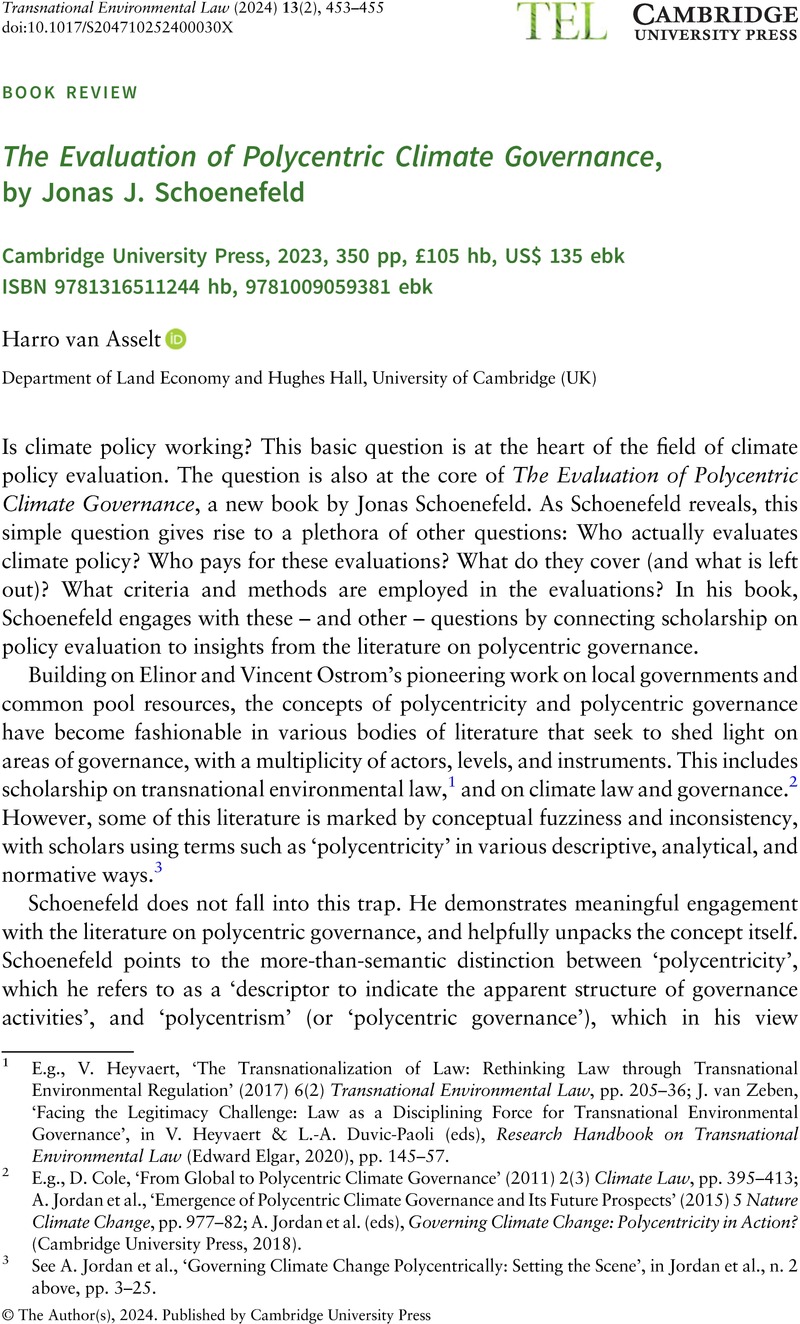No CrossRef data available.
Published online by Cambridge University Press: 18 September 2024

1 E.g., Heyvaert, V., ‘The Transnationalization of Law: Rethinking Law through Transnational Environmental Regulation’ (2017) 6(2) Transnational Environmental Law, pp. 205–36Google Scholar; van Zeben, J., ‘Facing the Legitimacy Challenge: Law as a Disciplining Force for Transnational Environmental Governance’, in Heyvaert, V. & Duvic-Paoli, L.-A. (eds), Research Handbook on Transnational Environmental Law (Edward Elgar, 2020), pp. 145–57Google Scholar.
2 E.g., Cole, D., ‘From Global to Polycentric Climate Governance’ (2011) 2(3) Climate Law, pp. 395–413Google Scholar; Jordan, A. et al., ‘Emergence of Polycentric Climate Governance and Its Future Prospects’ (2015) 5 Nature Climate Change, pp. 977–82Google Scholar; Jordan, A. et al. (eds), Governing Climate Change: Polycentricity in Action? (Cambridge University Press, 2018)Google Scholar.
3 See A. Jordan et al., ‘Governing Climate Change Polycentrically: Setting the Scene’, in Jordan et al., n. 2 above, pp. 3–25.
4 Ostrom, E., Janssen, M.A. & Anderies, J.M., ‘Going beyond Panaceas’ (2007) 104(39) Proceedings of the National Academy of Sciences of the United States of America, pp. 15176–78Google Scholar.
5 Rather than an untested assumption, one could argue that it is an essential prerequisite for the functioning of polycentric governance; see, e.g., Zeben, J. van, ‘Polycentricity as a Theory of Governance’, in van Zeben, J. & Bobić, A. (eds), Polycentricity in the European Union (Cambridge University Press, 2019), pp. 9–27Google Scholar, at 26.